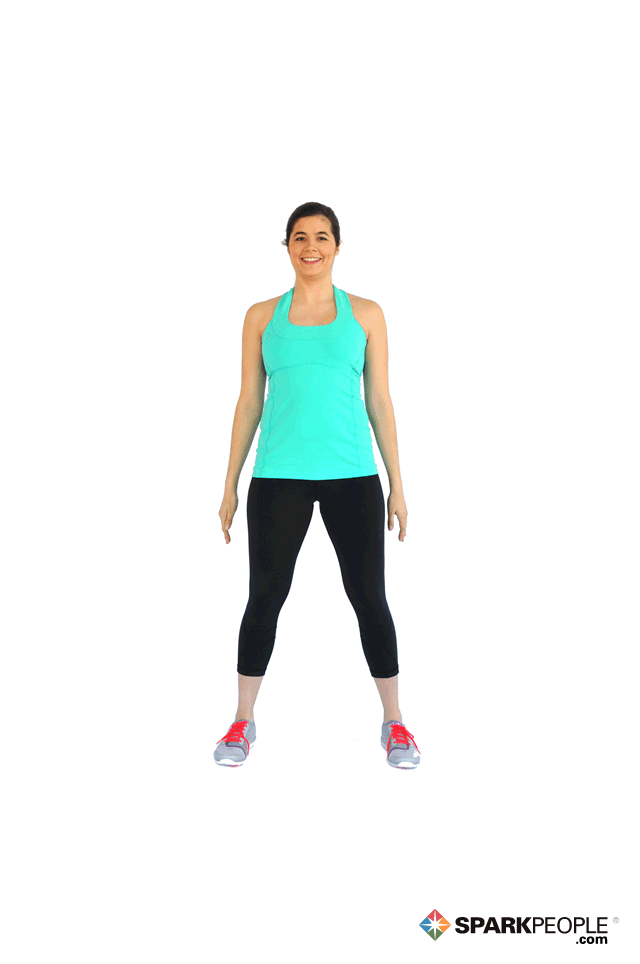|
Pain is one of the biggest factors that limits physical autonomy. Not only that, it also creates mental barriers throughout daily living. These challenges increase stress, limit confidence and reduce physical activity
For those suffering from knee pain, it's common to feel as if many exercises are suddenly off the table. Eliminating essential lower-body movements The squat is one such foundational and functional lower-body movements that is important to master. The list of our normal squatting movements Instead of eliminating this movement from an exercise program to avoid pain, approach it intelligently with proper technique and pain-free training progressions to yield the best results. The Squat Doesn't Hurt You. The Way You Squat Hurts You!Throughout a lifetime, people encounter injuries, orthopedic limitations, surgeries, excessive sedentary habits and other challenges that can cause compensatory patterns throughout the entire kinetic chain. These variables cause micro-trauma and compensation in our musculoskeletal system which adversely affects how the body moves on a daily basis. During exercise, those same compensations and limitations are present when additional load or range of motion is applied to the movement incorrectly, increasing the risk of injury. Instead of trying to force the movement or eliminate it all together, consider smart training methodologies, which will help improve your movement and work around any knee pain that might exist. Squats are one of the most butchered movements at the gym, leading to pain, higher risk of injury and subpar performance. Some common mistakes include breaking at the knees first, limited ankle mobility and knee valgus collapse. To properly perform a squat, the following components should be exhibited every time to maximize strength and power output while reducing the risk of injury:
 Pain-Free Squat VariationsTo help work around the various challenges and restrictions that may be limiting you from performing a pain-free squat and foundational strength development, consider adding some of these variations to your strength training routine. 1. Coaching Cues Sometimes all that is needed are some simple cues to clean up your squat pattern. There are countless cues that can be used to clean up someone's squat depending on what challenges they are facing, but before you attempt your first repetition, remember these basic cues:
2. The Box Squat The box squat is a great variation commonly used in both the physical therapy and strength training worlds. A box is utilized to allow for the trainee to sit down at the bottom of the movement, keeping the knees protected from a deeper range of motion that may not be accessible just yet. A major factor that can also cause knee pain is limited ankle mobility. The box squat enables someone with ankle mobility restrictions to work in bigger and safer ranges of motion, as very limited ankle dorsiflexion is required to complete this movement. Once adequate strength is gained from bodyweight training, an additional load may be introduced to this movement for further strength development.
When building foundational strength, the TRX squat is a great option due to its aid in stability and progressive assistance when needed. Holding on to the handles provides more stability, while also reducing load throughout the movement to reduce stress on the knees. This variation also helps teach proper squat mechanics by making it easier to learn how to "break at the hips" at the beginning of the movement.
Another common factor among painful squatters is valgus collapse of the knees. When the knees collapse inward toward each other, rather than tracking straight over the ankles, high amounts of stress are placed on the knees and other surrounding structures. In addition, this can also limit your squat depth and cause further compensation during the movement, ultimately putting you at risk of injury. Placing a mini resistance band around the legs right above the knees forces the knees to remain in the proper position. By pressing your knees outward against the band, you engage the glutes, abductors and other key stabilizers, taking the pressure off your knees and cleaning up your squat pattern.
The purpose of this article is to help guide and correct common movement compensations and incorrect techniques that cause or increase the pain response at the knees. This is not a clinical diagnosis. Please consult with a licensed medical professional if you are seeking a medical diagnosis. These exercises are intended to help guide individuals who are struggling with chronic knee pain during exercise. If you need more guidance, please consult a movement specialist professional. |



.jpg)


